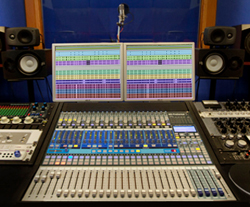When I write articles and make tutorials I really want to focus on being “process oriented.”
For me, mixing isn’t about techniques and signal chains, but about a thought process. I decide what I want and then use techniques or experiments to get that result.
My growth as an engineer doesn’t come from building a catalogue of techniques, it comes from broadening my musical awareness and refining my sense of feel and emotion. In the ever-forward quest of getting folks to think about music, I’d like to re-exam parallel processing.
Parallel processing on its most literal level means making a mult/duplicate of a sound source, processing the duplicate in an independent way, and balancing/blending the duplicate with the original. I like to view parallel processing as a way to isolate and fine tune an effect, and then blend it back into the signal as needed.
I also view it as a way to be more versatile or extreme with effects. You can distort the living beejeezus out of a tuba, but as long as the dry:parallel ratio is something like 90:10 it can still work really well. You can also customize the effect by using conjunctive processing — compressing, EQ’ing, distorting, adding a touch of reverb — whatever.
Let’s look at some common parallel processing situations and examine some possibilities.
1) Drum Bus: Parallel Compression
A common place people use parallel compression is a drum bus. At this point I think some people just do it because that’s what engineers do. But let’s look at the reasoning behind it.
First and foremost, in regular compression the whole of the signal is affected. It’s difficult to beef up the sustain of the drums without also rounding out the attack, particularly on a group bus. Parallel compression allows you to use lower threshold settings and really fine tune that attack time to allow for just the right amount to poke through.
Second, you can get a more extreme form of compression going. This means you can really make the parallel signal pump, and by fine tuning the release time and using a compressor with the right release curve, you can get the drums to swell and move with the groove. If that groove compliments the feel of the record this will subtly but profoundly reinforce the movement of the record.
Lastly, it allows you to correct any unwanted tonal shift that results from the compression. There’s no law saying you can’t EQ your parallel drum bus. In fact, sometimes it’s necessary.



















